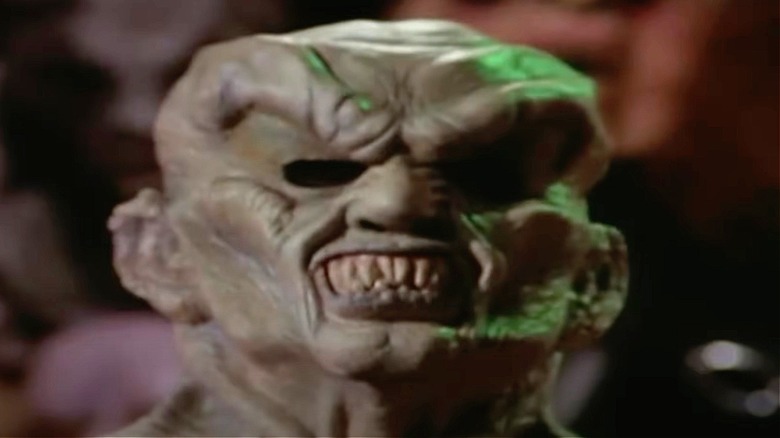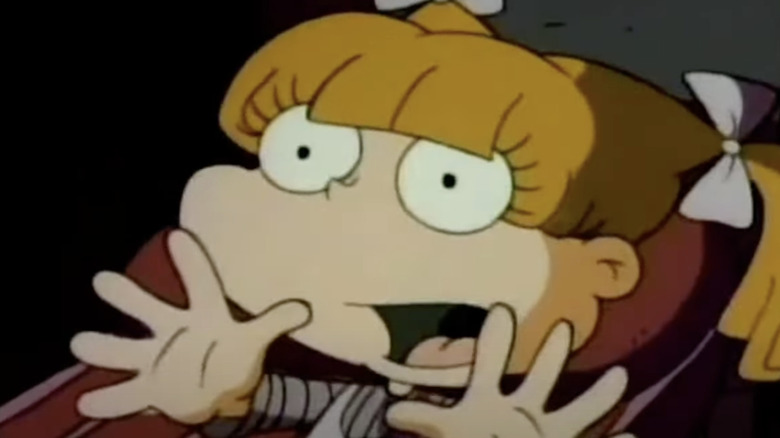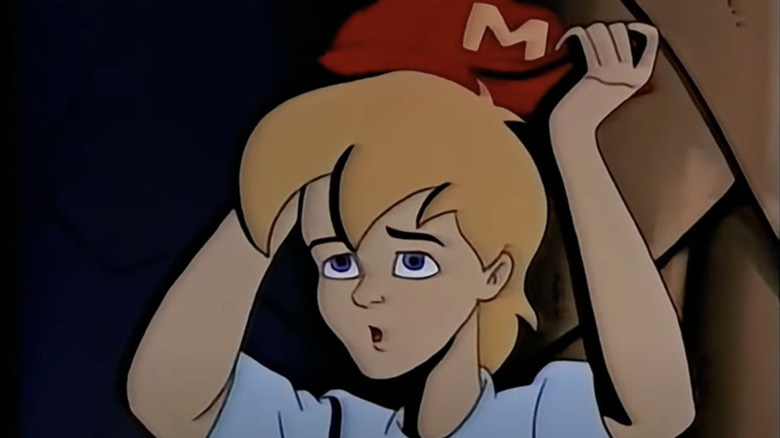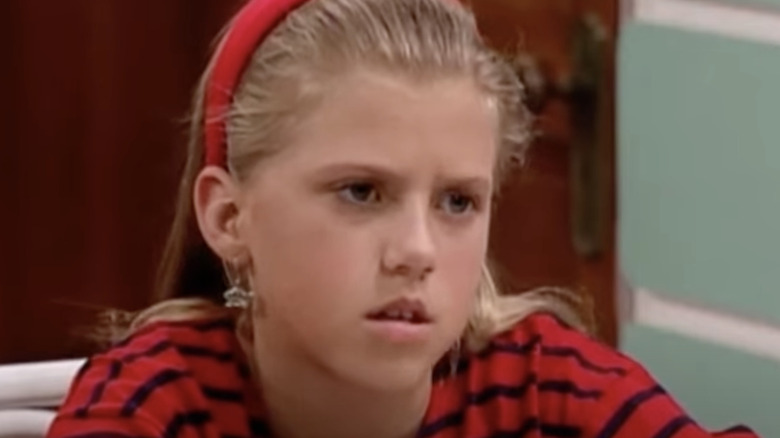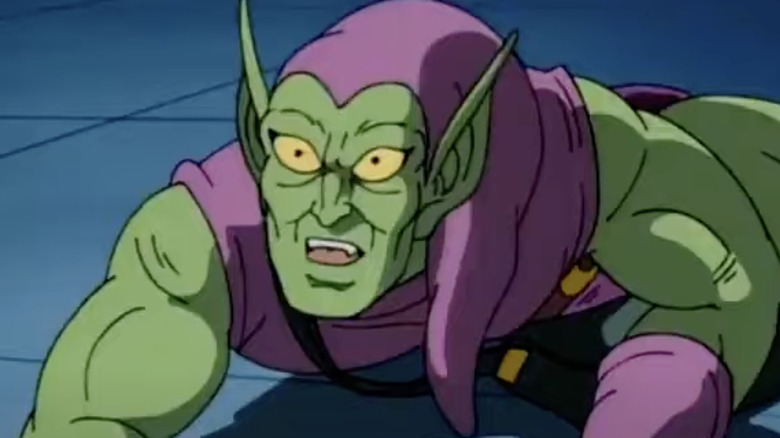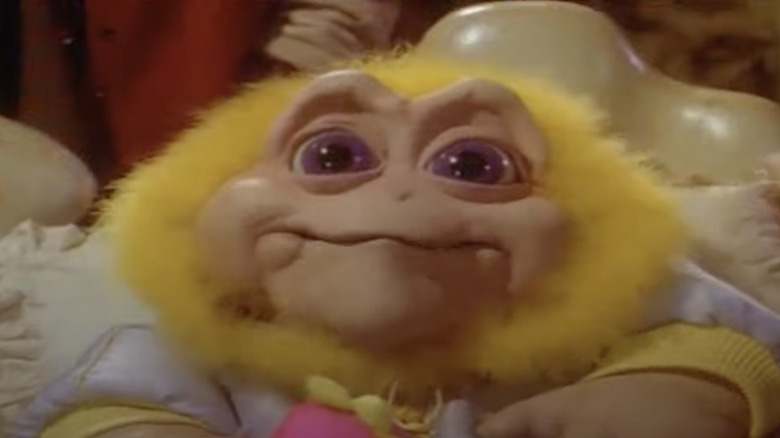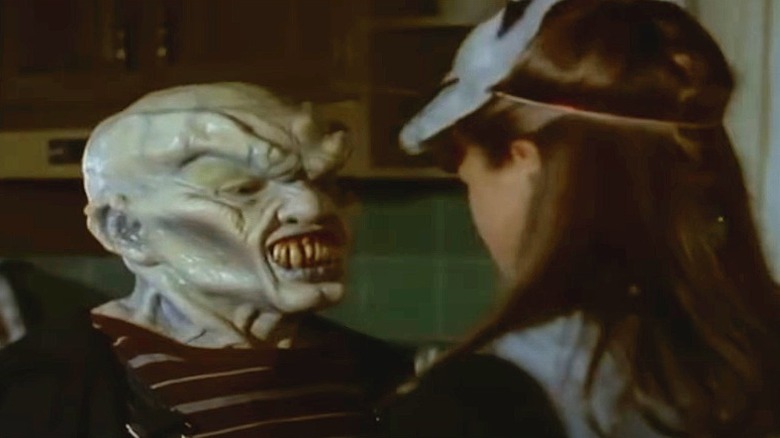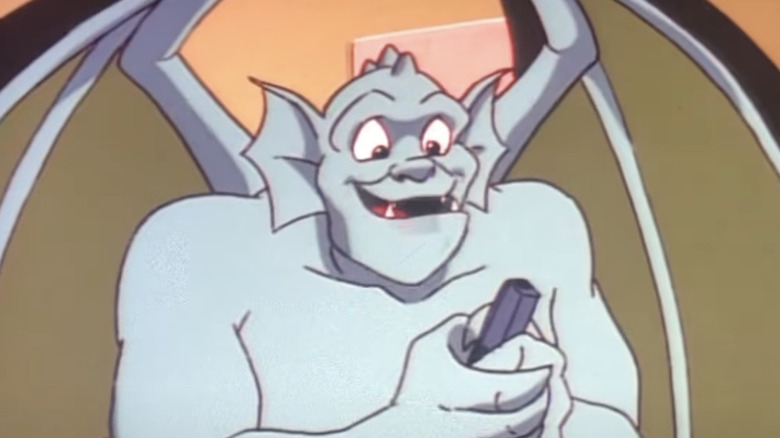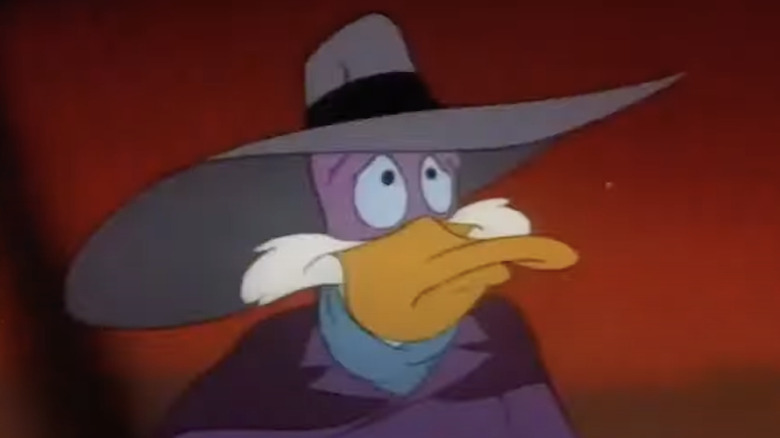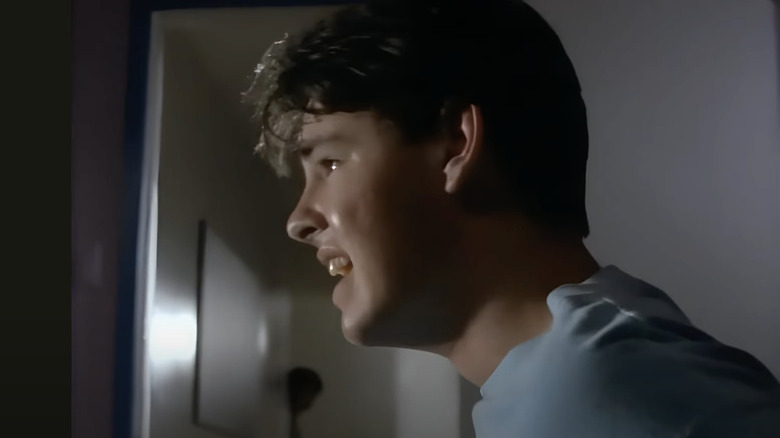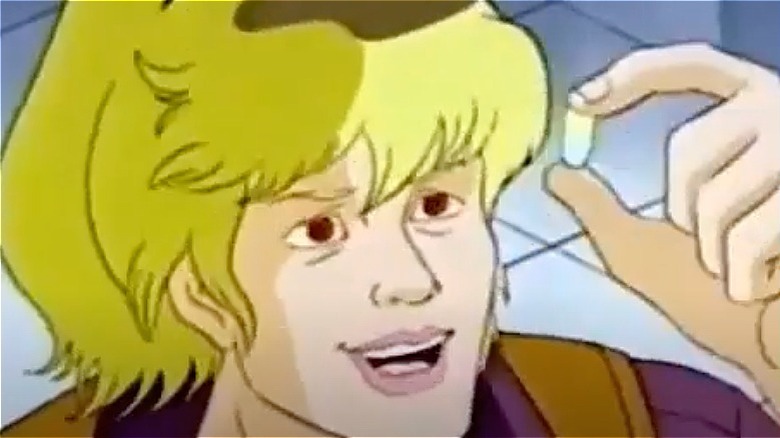The Darkest Episodes From '90s Kids Shows
Children's television was more abundant than ever before, and probably ever since, in the 1990s. What with syndicated programming, after-school fare, ABC's eventually disappeared "TGIF" programming block, the last stand of Saturday morning cartoons, and the proliferation of animation-oriented and kid-centric channels, the 1990s were a great time to be a TV-loving kid. Not only were there a lot of live-action sitcoms and cartoons alike, but the programming was varied, offering up shows that kids could enjoy, relate to, be entertained by, and occasionally even learn something from.
Even beyond the "very special episode" where a heady issue was addressed, these shows would sometimes take their characters to a dark night of the soul and back, putting them through the ringer and taking the unexpecting and innocent children watching at home on a similar emotional roller-coaster ride. Here are all the times when '90s kids television shows went from bright, silly, and frivolous to dark, unsettling, and haunting, often with a single episode that seemed to come out of nowhere.
Rugrats - Angelica's Worst Nightmare
While often plagued by disturbing scandals, Nickelodeon also brought viewers "Rugrats," which featured babies and toddlers attempting to understand a world in which literally everything is new and unfamiliar. The villain of most episodes, gleefully bullying and manipulating the babies, was the slightly older Angelica Pickles. In the 1994 episode "Angelica's Worst Nightmare," it's Angelica who gets pushed around — by her own brain.
Angelica is an only child and she likes it that way, so her mood goes from incredulous to panicked to desperate when her parents tell her a new baby sibling is on the way. When an adult tells her that her parents will be preoccupied with an infant from that point forward, Angelica misinterprets that to mean that she won't get any love or attention anymore. In a nightmarish dream sequence set after the birth, her parents no longer recognize Angelica, and the baby (in a creepy, adult voice) tells her that their parents and house are his now, and she best run away. Then they give the baby all her toys, make her sleep in the laundry room and do all the laundry, and feed her a piece of cheese for dinner.
The following day, Angelica learns that her parents won't be having a baby after all. The exact details of the reversal aren't made clear, but the episode ends with Angelica, having learned nothing, thrilled and relieved.
Mighty Max - Armageddon Outta Here
As was customary in the 1980s and early 1990s, Mighty Max was a toy line that inspired a companion cartoon series to promote those very toys. A "Mighty Max" TV series didn't have to be very good, but the 1993 to 1995 animated show provided a dense lore to accompany those plastic playthings.
Mighty Max packages provided a little bit of info upon which the series was based: Max wore a magical baseball cap that, when turned to the side, plunged him into the monstrous fantasy world known as the Horror Zone. It was there that Max waged weekly battle with the Skullmaster, an evil sorcerer who often killed his foes. The violence and terror got turned up a notch for the two-part series finale, "Armageddon Closer" and "Armageddon Outta Here." With the Skullmaster on the verge of taking over existence, he kills Max's closest allies in the Horror Zone: Viking Norman and soothsaying bird Virgil. In his final showdown with the Skullmaster, Max finds himself hopelessly outmatched and losing fast, until he recalls that he can use his magical baseball cap to travel back in time. He returns himself to the events of the first "Mighty Max" episode, and the finale ends with Max consciously reliving the past and all of its ugliness and treachery, yet remaining alert as to how to prevent the deaths of his friends in what's now the future.
Full House - Silence Is Not Golden
On the overwhelmingly sappy 1987 to 1995 family sitcom "Full House," rarely was an issue addressed that wasn't solved with a short and tender speech from Danny Tanner or one of the live-in uncle figures to D.J., Stephanie, and Michelle Tanner, and a hug. "Full House" existed mainly as a vehicle for stories about warm family moments, not to teach kids the very real warning signs they should look out for if a friend is experiencing a traumatic domestic situation. But that's just what the 1993 episode "Silence Is Not Golden" was all about. Through the eyes of Stephanie Tanner, viewers experienced the dark and heartbreaking story of a classmate living with abuse.
After quarreling with Charles, the class agitator, Stephanie is made to work with him on a project. While studying, he confesses that he regularly receives physical punishment from his father. Charles asks Stephanie to not tell anyone what he said, and she spends the episode grappling with whether to keep that promise or alert a trusted adult. Charles is ominously absent from school the next day, and an agonizing Stephanie finally tells Uncle Jesse what's going on. Viewers never see Charles again — it's later stated that family services placed him in a foster home, based on Stephanie's tip. There are no easy answers at the end of this "Full House" either — just a child wondering why and how a parent could be so cruel.
Spider-Man: The Animated Series - Turning Point
Until the movies came along, the longest-running Marvel Comics production featuring a teenage hero with arachnid powers was 1994 to 1998's "Spider-Man: The Animated Series." Populated with the most memorable characters from the comics — Spider-Man (aka Peter Parker), his true love Mary Jane Watson, and the nefarious villain the Green Goblin — it also pulled stories and took inspiration from decades of "Spider-Man" graphic books. The November 1996 episode "Turning Point" was indeed that, featuring a showdown between hero and villain with the innocent romantic partner serving as a pawn and ultimately a tragic casualty — a rare result for kid-targeted cartoons of the era.
In the 1973 comic book arc "The Death of Gwen Stacy," it's that Spider-Man love interest who is kidnapped and dies. In "Turning Point," the Green Goblin abducts Mary Jane Watson to punish Spider-Man after he learns that he and Peter Parker are one and the same. Then the villain raises the stakes and shockingly throws Mary Jane from a bridge. She doesn't immediately die, but suffers a fate perhaps worse than death: She is pulled into a portal, where she likely remains in a purgatorial state forever. An understandably upset Spider-Man tries to kill the Green Goblin once and for all, but the bad guy gets trapped in the portal, too. Then the portal closes and the episode ends, but not before Mary Jane, floating in oblivion, makes a call for help that no one will hear.
Dinosaurs - Changing Nature
"Dinosaurs" aired on ABC from 1991 to 1994, gently satirizing the foibles of modern life by showing anthropomorphic dinosaurs dealing with similar issues. Produced by the same Jim Henson staff and facilities that gave the world the Muppets, the technologically complex animatronics and puppets gave the sweet and often silly "Dinosaurs" a highly realistic feel, which meant the events of the 1994 series finale — a devastating lesson about climate change — landed hard with viewers.
Earl Sinclair was a regular guy and working stiff who supported his family as a tree pusher for the oppressive corporation WESAYSO. In the final episode of "Dinosaurs," "Changing Nature," Earl wins a spot on a company task force to decide what to do about an overgrowth of an invasive plant, usually kept to manageable levels by a beetle species recently eradicated after WESAYSO built a wax fruit factory on the insect's breeding grounds. The plants threaten to overtake Pangaea, and Earl is part of the decision to globally spray a pesticide to kill off the awful plant. Instead, it destroys all vegetation on Earth, and to prevent the world from starving to death, Earl's task force tries to bring on enough rain to revive plant life by plopping bombs into volcanoes. Instead, that action brings on a new and deadly ice age. The final shots of the episode, and "Dinosaurs," show the Sinclair family in what are clearly their last moments, shivering and fearing what's to come.
Goosebumps - The Haunted Mask
After they became a publishing phenomenon in the 1990s, R.L. Stine's "Goosebumps" books were adapted into an anthology-style after-school TV show for kids. Neither "Goosebumps" incarnation placated children or patronized them — kids faced supernatural menace in every "Goosebumps" installment, and they usually used their brains to find their way out of it. One of the harshest and most unrelenting episodes of the series is the very first one, "The Haunted Mask."
Steve and Chuck are a couple of school bullies — mean pranksters whose lives revolve completely around humiliating or frightening classmate Carly Beth, a shy and timid kid seen as an easy mark because she's so prone to getting upset. Carly Beth receives little sympathy from her friends, and, accepting the tacit implication that she should toughen up or grow a thicker skin, she kind of literally does the latter in order to fulfill the former. She goes to a spooky store and buys a truly revolting mask, which she plans to use to revenge-frighten her bullies on Halloween. That all goes according to plan, but then the clearly haunted mask overpowers Carly Beth. The whole thing nearly fuses to her face permanently, potentially turning her into a murderous monster. On the advice of the shopkeeper who sold it to her, she manages to get it loose with a mask her mother made her, because it's a symbol of love.
Tiny Toon Adventures - Elephant Issues
As evidenced by introductory segments featuring goofball character Gogo Dodo explaining how it's okay to be serious sometimes, "Elephant Issues" was the "Tiny Toon Adventures" spin on the issues-oriented episodes so prevalent in '90s television. Some puns — like an elephant wielding a box of tissues — suggests that the writing staff intended to mock the concept. Nevertheless, one of the three mini-stories that comprise the episode in this show about younger versions of classic Warner Bros. cartoon characters, went wildly over the top and bluntly moralistic. "One Beer" plays like the kind of anti-drunk-driving skit that's performed at high school assemblies.
"One Beer" finds Buster Bunny, Plucky Duck, and Hamton J. Pig deciding to split the one beer they find in Buster's fridge. After explicitly stating that this episode will teach kids about the dangers of drinking, they all take one sip each and get monumentally intoxicated. And then the montage of disagreeable drunken activity begins: burping, making unwanted advances at their female classmates, and stealing a police car. They drunkenly drive up Death Mountain, plummet off of it, and land in a graveyard, from whence their souls fly out of their dead bodies and ascend to Heaven as angels. Undercutting the drama and lesson somewhat, Buster, Plucky, and Hamton take off their angel costumes and reiterate the idea that drinking alcohol isn't good. This episode of "Tiny Toon Adventures" would later join the list of kids show episodes to be banned.
Gargoyles - Deadly Force
Some of the weirdest statues from around the world are gargoyles, and the ghoulish building guardians also served as the inspiration for one of the least light-hearted television shows ever produced by Disney. The 1994 to 1997 staple of the "Disney Afternoon" block was the saga of a group of 1,000-year old creatures who, posing as gargoyles, stalk the night and protect New York City.
"Gargoyles" rivaled fellow 1990s after-school hit "Batman: The Animated Series" for moody, gloomy, and gothic storylines about urban crime, particularly the 1994 installment "Deadly Force." Taking a break in coping with the mob-related theft of a shipment of illegal high-tech weapons, NYPD Detective Elisa Maza cooks dinner at her apartment when she's visited by gargoyle Broadway, a close friend. The creature is in the midst of a cowboy phase, transfixed by a Western movie with a gunfight scene. When he finds Elisa's police-issue handgun in its holster, he grabs it and uses it as a prop for playing cowboy, and it accidentally discharges — and strikes Elisa. The detective recovers from the near-deadly incident, and viewers get a lesson about gun safety, but the immediate aftermath of the shooting yielded an image that likely burned itself into the brains of millions of young "Gargoyles" viewers: that of Elisa lying near death in her kitchen in a pool of blood.
Darkwing Duck - Hot Spells
"Darkwing Duck" is a '90s TV show still watched and loved today, holding its own against other cartoons decades later for its deft mix of comedy and superhero-style action. The series followed the crime-fighting adventures of Darkwing Duck, aka mild-mannered dad Drake Mallard, who really wants to get noticed for all of the good he does for the city of St. Canard. Categorically fun and innocuous, "Darkwing Duck" winged into truly dark territory with its 1992 special Halloween episode "Hot Spells."
When Darkwing and his daughter Gosalyn visit Morgana's magic school, Gosalyn decides she wants to pursue witchcraft, which the secretly watching Beelzebub — as in Satan — sees as an opportunity to lure her father to his doom. After the devil incarnate visits the magic school disguised as a janitor, he tricks Gosalyn into using a book of forbidden spells. One thing leads to another, Gosalyn opens a hellgate, and Beelzebub in his true form kidnaps Morgana. Darkwing offers to take her place, but the whole arrangement falls apart because no soul contracts were ever signed, and it was all based on trickery. Everything returns to normal, and Gosalyn apologizes for nearly consigning her father's soul to eternal damnation. (Happy Halloween, everybody.) "Hot Spells" aired once on ABC's Saturday morning schedule and wasn't included in digital collections, making this a lost episode of "Darkwing Duck."
Are You Afraid of the Dark? - The Tale of the Shiny Red Bicycle
The framing device of "Are You Afraid of the Dark?" was a group of kids who called themselves the Midnight Society sitting around a campfire one-upping each other with frightening stories, which viewers see fully dramatized on screen. Most every episode of the '90s Nickelodeon series was necessarily frightening, but none were more unsettling and deeply affecting than 1993's "The Tale of the Shiny Red Bicycle."
Young friends Ricky and Mike race their bikes to a waterfall and dam and take a break on a rickety old bridge. Ricky and his bike slip off precariously when a plank breaks. Mike's attempts to pull his friend up by the hand and his backpack don't work, and the boy plunges to his death. It's then that viewers learn that this horrible event happened five years prior, and that Mike relives it often in his dreams. Clearly suffering from post-traumatic stress disorder and survivor's guilt, Mike continues to blame himself for Ricky's death, and he struggles to carry on with his own life; he experiences flashbacks and vivid visions of a ghostly Ricky, and his schoolwork has suffered. A sadly delusional Mike comes to believe that Ricky is actually still alive, and he only finds emotional and psychological peace when he saves his brother Ben from drowning in the same way and same place where Ricky died.
Captain Planet and the Planeteers - Mind Pollution
"Captain Planet and the Planeteers" was always didactic and ham-fisted, but it was all for a good cause: to instill an environmentally conscious mindset in its impressionable young viewers. While Earth-saving superhero Captain Planet and his band of idealistic acolytes usually coped with industrial pollutants of some kind, the 1991 episode "Mind Pollution" dealt with a different kind of toxic menace: a hot new street drug called Bliss, introduced by regular villain Verminous Skumm.
Planeteer Linka's cousin Boris tries the drug and instantly becomes addicted. To get more money to buy more Bliss, he steals Linka's magic Captain Planet-summoning ring and distracts her by lacing her food with the drug, causing her to become dependent, too. The Planeteers focus on one of their own and don't notice that the whole of Washington, D.C., becomes woefully addicted to Bliss, too. A side effect of the drug: It makes users do Skumm's bidding, and they dutifully try to kill Captain Planet. Finally, Captain Planet wins out over the dope-pushing villain, but only when the latter accidentally takes too much Bliss. The status quo is restored, but not quite: Boris dies from a Bliss overdose.
If you or someone you know may be the victim of child abuse or needs help with addiction issues, contact the relevant resources below:
- The Childhelp National Child Abuse Hotline at 1-800-4-A-Child (1-800-422-4453) or contact their live chat services.
- The Substance Abuse and Mental Health Services Administration website or contact SAMHSA's National Helpline at 1-800-662-HELP (4357).
